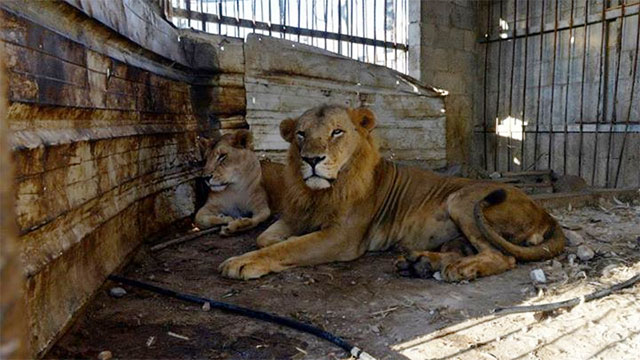
The IDF has a post-war mission
It is clear that the IDF must devise a new path in the wake of Protective Edge; it must become quicker, more efficient, more cost-effective, and able to handle the kind of threat posed by terrorist groups. But can it do it?
Two Palestinian families - Durmush and al-Masri, had an exalted position in the tunnel industry in the southern Gaza border town of Rafah. Their "Pioneer Corps" brought them money, power and prestige. And in the middle of the last decade they smuggled through tunnels from Egypt a number of lion cubs. There was no business motivation behind it - lions were intended to show everyone their power and their importance. And thus the animals were cared for devotedly by the two families.
In 2007, Hamas took over the Gaza Strip. The new government sought to impose its authority in the Strip, beginning with the tunnel industry. The lions were confiscated and sent to a zoo that was opened in Beit Lahia, in the northern Strip.
This week, exhausted and hungry, the lions were loaded into the cages sent from a zoo in Amman. King Abdullah of Jordan had agreed to take the lions into his care. That was the sum of his contribution to the Palestinian war effort: He guaranteed safe passage for the lions from Gaza to Jordan.
There were those in Israel who saw this story as solid proof of an IDF victory in Operation Protective Edge: Hamas was so battered, so weak, it could not even look after its lions, a tangible symbol of pride.
One can, of course, interpret this story differently. Since the operation, an argument has been raging within the defense establishment over its outcome. The outgoing head of Military Intelligence, Aviv Kochavi, presented the General Staff with a picture of the visit by Ismail Haniyeh to his neighborhood in Gaza immediately after the operation.
Kochavi saw the ruins, while others saw Haniyeh's victory signs. As the extent of the destruction grew, so did the Hamas pride. We were, they claim, on our feet the entire time. The houses may have been toppled, but Hamas faced a massive military force and withstood it. It will continue to control Gaza.
The debate extends beyond the realm of intelligence officers and commentators on Arab affairs. It cuts to the root of Israel's security policy. Protective Edge exacted a heavy price from - 72 dead, a cost of ten billion shekels or more, partial paralysis of the state over a 50-day period, and problems in the international arena. If this is what the army can do against a limited and isolated force, with its back to the sea, what will happen when Hezbollah raises its head?
As with the Second Lebanon War of 2006, this operation also utilized a tremendous amount of IDF fire. An "orgy of fire," they called it in the General Staff review. The heavy fire was used in order to reduce the number of IDF casualties, an issue that has become an obsession in recent years. A large proportion of the fire was in the form smart bombs, costing hundreds of thousands of dollars. Smart bombs reduced the risk of damage to the surrounding area; any harm to civilians is viewed as harm to Israeli interests.
But the results refute these scholarly calculations. In the wake of the operation, sources in the defense establishment checked the lists of those killed in Gaza, one after another. By their reckoning, out of 2,200 people killed on the Palestinian side, 1,300 were innocent civilians.
This should truly be a cause for concern. For it shows that despite the wealth of data provided by Military Intelligence, despite the real efforts made to minimize the harm, the harm to civilians was great, and the damage to Israel considerable.
There was the same concern about casualties among Israeli forces. This concern was a major consideration in decision-making at both the political and military levels. For nearly half of the soldiers who fell in the operation were killed by mortar fire on staging areas or by friendly fire.
It is clear that the IDF must think about a new path in the wake of the operation; it has to be more efficient, cheaper, faster, and able to handle the kind of threat posed by terrorist groups. It is doubtful that it will do so. There are members of the Knesset Foreign Affairs and Defense Committee who believe that change must include the entire IDF, its procurement programs, manpower, budget management. A committee headed by Brigadier General (ret.) Yohanan Locker recommended to the government a series of steps in this direction.
But the message from the top is that everything is okay. We won. So what was will be - with billions more for defense in the pipeline.












